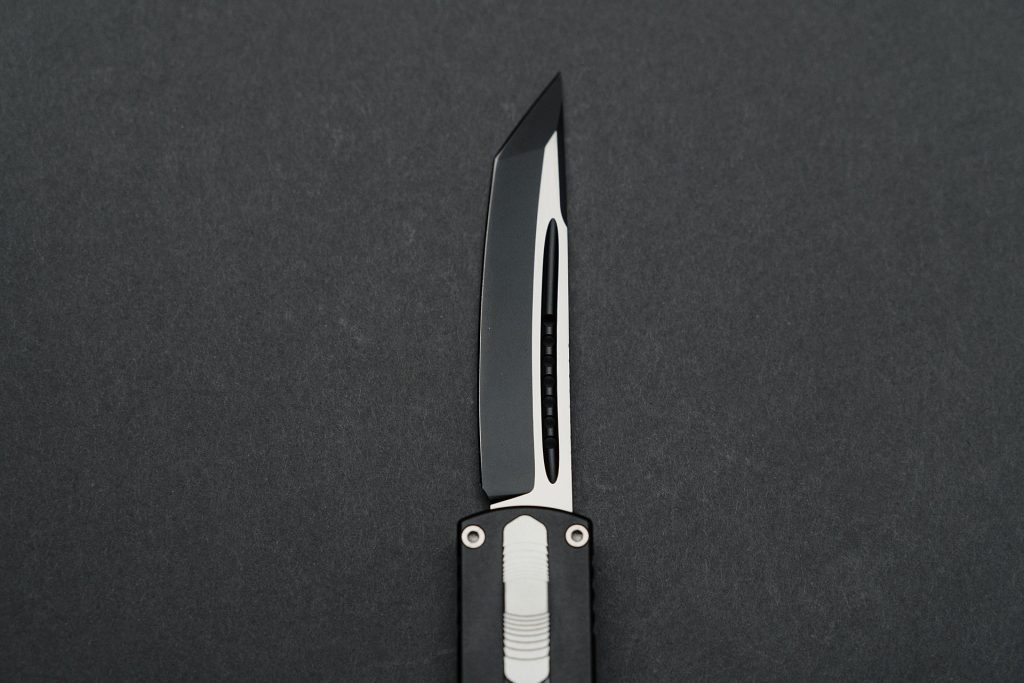OTF Knives Survival Uses
Wildness-focused author Gary Paulsen won the Newberry Honor award for his 1986 young-adult book Hatchet, an adventure story where a 13-year-old boy goes from worrying about his parents’ divorce to trying to survive in the Canadian wilderness after a small-plane crash. The titular implement is as much a character as the boy himself, and its multi-faceted utility saves him from death multiple times. And while Paulsen goes out of his way to praise the unique features of the hatchet, many of its tasks could easily be replicated by a knife — including OTF knives.
Though OTFs aren’t as heavy or robust as bonafide survival knives, they can still help you perform vital tasks out in the wild. In this post, we’ll describe eight survival uses to which you can put OTF knives and the ways in which these practical functions that can help you thrive when you’re away from civilization.
Trail Blazing and Site Clearing
An OTF isn’t a machete, and no matter how large your blade may be, it will lack the length and heft of a proper machete. Still, it can help you get to where you want to be and prepare the space for you to rest there. With a sharp OTF, you can pare away branches, creating a path through a thinly forested area. And once you’ve discovered the site where you’d like to set up camp, your blade will aid in the removal of brush.
Setting Up Camp
The applicability of an OTF to setting up your camp will vary depending on how you plan to shelter. If you’ve brought a tent with you, your OTF will have limited practicality, except perhaps as a way to hammer in tent pegs. (We wouldn’t recommend this, by the way. Using an OTF as a hammer is a great way to end up with a nonfunctional or deeply damaged knife.)
However, the situation is different if you merely have a tarp or plan to try primitive camping. In these cases, an OTF becomes an essential tool, aiding with …
- The fashioning and notching of branches to serve as tent poles
- The cutting and trimming of fronds or thatching material that will function as a roof
The crafting of improvised tent pegs
Preparing a Fire
While you’re busy clearing all of those tree limbs and all of that brush away, see if you can find some dry wood, because an OTF is an essential aid in starting a fire. Yes, it’s true that you can use most any kind of knife to start a fire either with a flint or to craft a bow drill. Of course, these are completely legitimate methods in a true survival situation — but they’re also quite tedious. If you’re simply camping, a better use of your OTF might be to create tinder by either cutting small, dry branches or shaving off small slivers.
There is one element of fire starting at which OTFs don’t excel, and that’s splitting wood. If you don’t have a hatchet handy, some survival experts recommend a technique called batoning. This method involves striking downward on the knife with another piece of wood, which is supposed to slowly split your firewood. Gurus are divided about the effectiveness and practicality of batoning, but one thing is sure: It doesn’t work with OTF knives, which are too short and too easy to damage with repeated blows.
Hunting
Similarly, hunting with only an OTF isn’t very practical. Some like to tackle boars with blades, but that sort of knife hunting involves larger, fixed-blade weapons. However, you can craft several kinds of effective primitive weapons using an OTF. A simple wooden spear is an obvious choice, and if you have some paracord, you can affix your OTF to the end to make it more deadly. Some even use knives to craft primitive crossbows and longbows that are strong enough to take down game.
Preparing Game
Once you’ve secured a kill, you need to clean it. When properly maintained and regularly sharpened, OTF blades can do an excellent job at skinning, gutting, filleting, jointing, and deboning. However, you will want to thoroughly clean your OTF once you’ve finished with the animal, and if the job proved particularly messy, you should consider fully disassembling your OTF. Blood, fat, and tissue within its inner workings are a recipe for disaster.
Cooking and Consuming Food
From carving a spit to serving as an eating utensil, an OTF offers multiple opportunities to facilitate the cooking and eating of food. In addition to crafting eating implements and serving up your grub, it also works well as your own personal utensil. As with our previous point, though, cleanliness is key. Don’t let your OTF come into contact with food if you haven’t cleaned it, and make sure to remove any residue after you finish.
Serving as an Improvised Tool
Swiss Army knives are useful for the manifold tools they pack away into their stubby handles, but if you aren’t carrying one, an OTF still comes in handy. The tip of an OTF blade can function as a flat-head screwdriver, particularly if you have one with a tanto-style tip. In a pinch, you can also use it to dig, although this will have negative repercussions on your knife’s longevity. Need a signal mirror to alert rescuers? A shiny OTF surface works wonders. Finally, an OTF can help you make tools of a more primitive variety, such as ropes.
Wound Care
This final category is one where you should only employ your OTF in the most dire situations. OTFs have a role to play in wound care apart from cutting bandaging, but it isn’t very pleasant. In the case of certain extreme injuries, you could heat your OTF and use it to cauterize the wound.
Browse our selection of OTFs here at TacKnives and see if there’s one that works for you!



